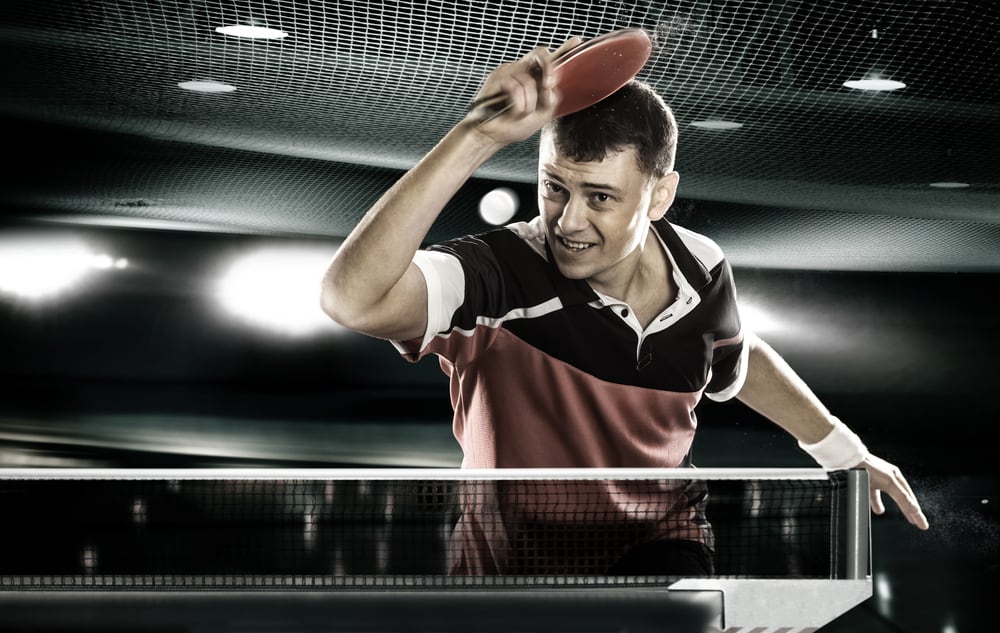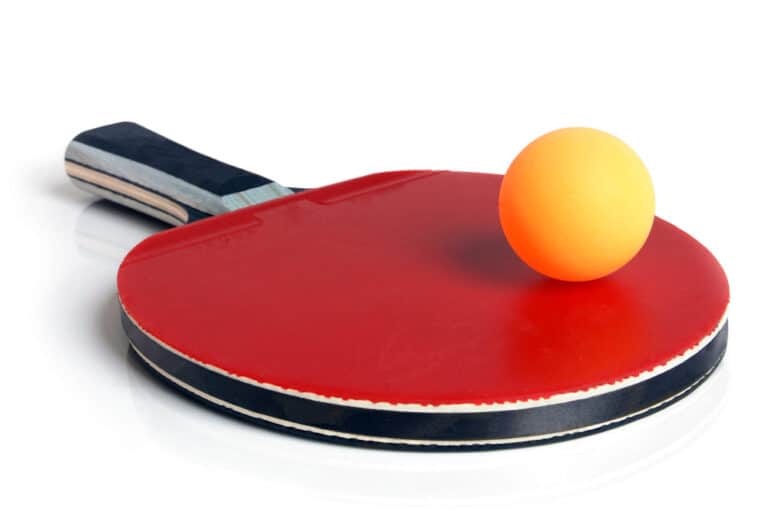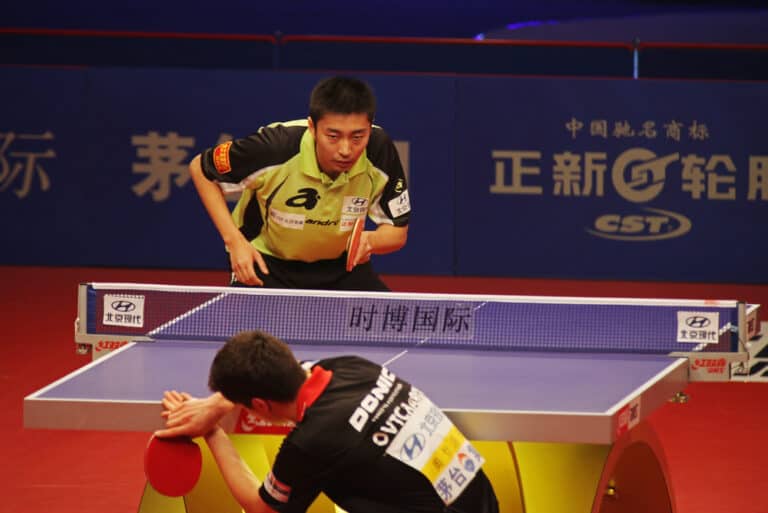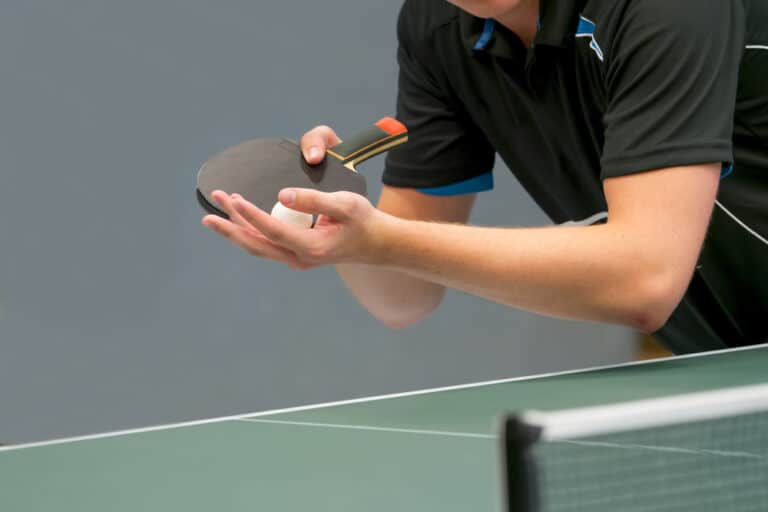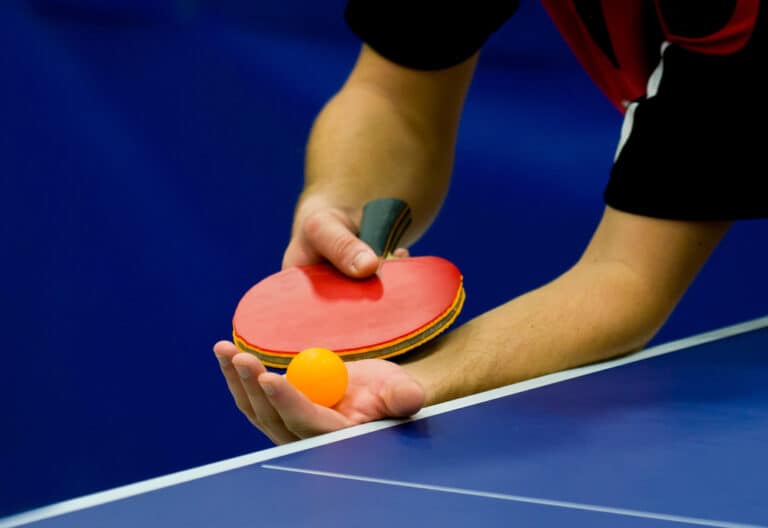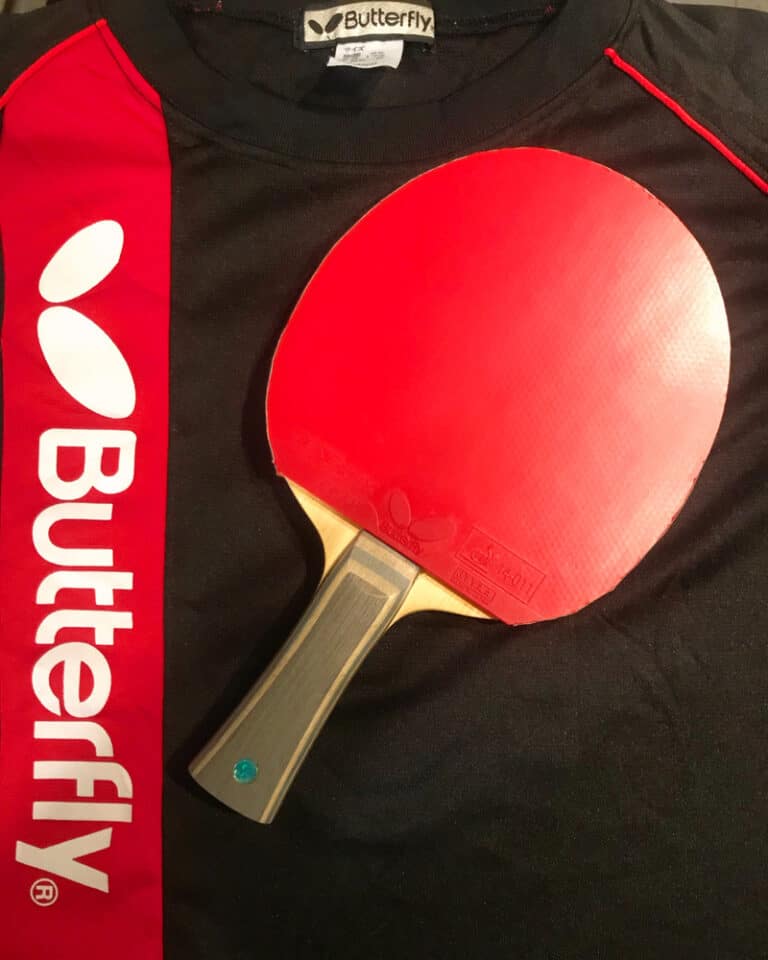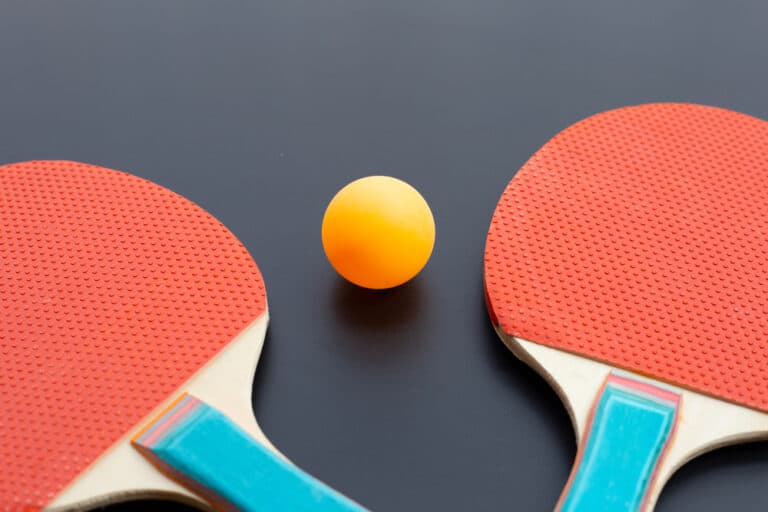Can You Hit The Ball Before It Bounces In Table Tennis?
Hitting the ball before it bounces, otherwise known as volley, is quite a tactical method of playing regular tennis. It is even encouraged as it is an offensive strategy that puts much pressure on the opponent. However, in table tennis, the rules are a bit different because preventing the ball from first hitting the table is seen as an obstruction.
The ITTF, International Table Tennis Federation, states that hitting the ball before it reaches the playing surface is an obstruction; therefore, you cannot volley the ball as there needs to be a clear indication that your opponent’s shot is technically ‘in’ meaning it needs to hit the surface.
So, although volley might seem like a good idea, it is not allowed as obstructing the ball before it hits the surface is not allowed. The rules on obstruction are pretty straightforward. Still, specific alterations have been made since the 90s, as obstruction during a match happens far more often than expected and is usually unintentional. Therefore, let’s delve into the specifics of the rules regarding volleying and obstructions.
What Are The Rules Concerning Volleying The Ball In Table Tennis?
The main issue concerning volley in table tennis is obstruction. It is not allowed to strike the ball, intentional or unintentional before it touches the surface. As a result, it was illegal during the 80s and 90s to volley the ball under any circumstances, and points were awarded to the opponent if it did happen.
However, during the 90s, the rule was altered as an unintentional obstruction was, and still is, a common occurrence. So, although you can’t hit the ball before it touches the surface, circumstances will dictate which player receives the point.
Regarding obstruction, the general rule states that a player cannot hit the ball when it is traveling towards or above the table before it touches the surface after the opponent last hit it. “Hitting the ball” also includes touching it with anything the player is wearing or carrying.
Regarding the circumstances, currently, it depends on where the ball was heading when it was obstructed. For example, if the ball was moving in the direction of the playing surface and would have legally made contact with it, but the player obstructed it from doing so by volleying or being in the way, you will be awarded the point.
However, suppose the ball was clearly not going to hit the playing surface and already traveled over the net but was also obstructed by the opponent. In that case, points will be awarded to the opponent as the ball would not have made contact with the surface anyway, and the player’s obstruction was unintentional.
To summarize, if you play a bad shot that was clearly not going to reach the playing surface but your opponent volleys it, your opponent will still get the point. Only when your shot was clean and would have made contact with the surface, but the opponent struck it mid-air will it be considered an obstruction, resulting in your point.
Why Is It Illegal To Strike The Ball Before It Bounces In Table Tennis?
The ITTF created a series of rules and still adjusts certain rules to this day to ensure a fair and entertaining game for both the spectators and players. Unlike regular tennis, players can’t literally play on the court as the table does not provide space or stability. As a result, the rule was introduced that the ball has to bounce on the opponent’s side before it is returned.
Due to the small amount of space the table provides, it’s difficult for the empire and receiving player to know whether the ball was indeed in play within the bounds of the playing surface if it is volleyed. Hence, the ball must first make contact with the surface for all parties involved to see that it is a legal shot before returning it.
As the table tennis playing surface is relatively small and the game moves at an incredible speed, it’s nearly impossible to deduce the ball’s direction if it’s struck mid-air. Only a few millimeters will make a considerable difference; therefore, to avoid confusion and conflict, anything that prevents the ball from making contact with the surface is an obstruction.
Was It Ever Legal To Hit The Ball Before It Bounced In Table Tennis?
Although hitting the ball before it bounces is a popular technique in tennis, it was never legal to volley in table tennis. The confusion is only present due to the similarities of regular tennis, but volleying the ball is neither a great strategy of play nor always possible.
Besides the fact that the table prevents players from volleying effectively and that you actually have more control over the shots if it bounces first, there was a time when players forced their opponents into playing the ball mid-air in order to score a point. So, although it was never legal to volley the ball, the rules regarding the return weren’t always ideal.
In the past, the general rule stated that you couldn’t hit the ball if it were mid-air under any circumstances, but it did not refer to the specifics. Hence, players could play bad shots in the direction of the player without it remotely being close to the table’s surface and still score a point.
For example, if you played a bad shot, intentional or unintentional, and it hit your opponent’s racket or anything else connected to them, you would have been given the point as your opponent ‘obstructed’ the ball’s direction.
As a result, you could force your opponent into either obstructing or volleying the ball with bad shots that were not intended for the table to score a point. Of course, playing bad shots to induce a volley is not very sportsmanlike, but it was legal.
However, the current rule now states that a player will only lose a point if they intercept the ball that would have otherwise been a good and legal return. Therefore, if you “obstruct” or volley the ball after it went over the end or sidelines, the point will still be awarded to you as the ball was not moving toward the playing surface.
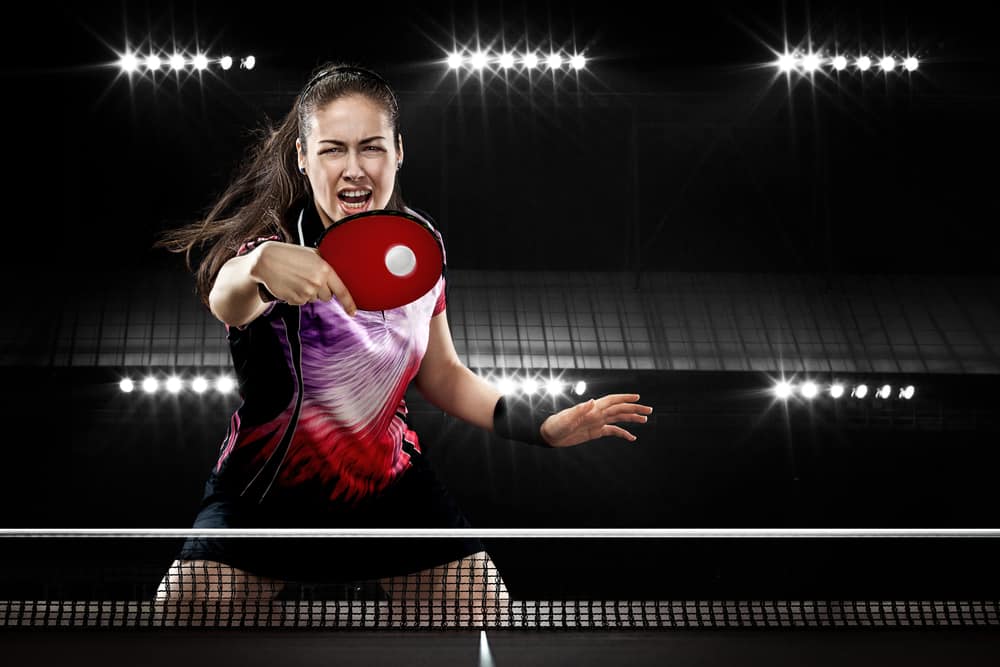
What Are The Rules For A Legal Return?
If volleying the ball isn’t a legal return because it counts as obstruction, then what are the rules governing a legal return? Let’s look at what players can and cannot do during a professional tournament when returning the ball.
Firstly, we can delve into the basics of striking the ball. The ITTF rule 2.05.07 states that a return will be legal if the ball is struck with anything below the wrist of the racket hand. To provide clarity, you can hit the ball with the rubber, the wood edge of the blade, the handle, and even your fingers.
It will be a legal shot if the ball is struck with your racket hand and below the wrist. Although, technically, you can strike the ball with your ‘hand,’ it has to be the racket hand with the racket still attached to it.
For example, you won’t be allowed to play with your “racket hand” if you are not holding a racket meaning accidentally dropping the paddle and hitting the ball with your fingers or palm will not be accepted. However, you can change your racket hand.
Switching racket hands is not the most common technique as it’s quite an advanced and challenging maneuver, but it is legal. It’s important to note that nothing other than the racket hand is allowed to touch the ball during the return.
Switching paddles and hitting the ball with your racket hand’s finger is perfectly legal as long as your ‘free hand’ and any other part of your body is not obstructing your opponent’s shot.
Can You Touch The Playing Surface With Your Hands Or Your Body When Returning?
You are not allowed to touch the playing surface with your ‘free hand’ according to rule number 2.05.07. As a result, you will lose a point if you let your free hand rest on the table or use it to assist yourself during a game. Although you cannot use your free hand, touching the table with your body or your racket during the match is perfectly legal.
It’s vital to note that the above-mentioned rule only applies while a point is in play. Players are free to use both their hands to clean or touch the table when a point is not in play during a match.
Can You Touch The Net When Returning?
Although you are allowed to touch the playing surface with your body or racket during a point, it’s illegal to touch the net with anything you wear or carry. Rule 2.10 states that the opponent will be awarded a point if a player touches the net, including the post, with anything they are wearing or using.
What Happens When You Move The Table?
Although it’s legal to touch the table with your racket and body to play a shot, with the exception of your free hand, you should ensure that you don’t move the table. Moving the playing surface with your body, or anything attached to it, will result in a point lost, according to rule 2.10.
As players are allowed to ‘brush’ and ‘touch’ the table, they often head to the playing surface with speed and force, accidentally moving the table. Most commonly, moving the table is accidental as the players’ reflexes move far too quickly for them to adjust their force. Nonetheless, moving the table will result in lost points even if it was in play.
What Do I Need To Know About The Basic Ball Bouncing Rules In Table Tennis?
The rules regarding bouncing during a game can be quite confusing as it differs from the serve to the return. Let’s delve into the basic rules of when the ball is supposed to bounce and how many times.
Before starting with the specific, it’s vital to note that the ball should always bounce. The amount of times the ball should bounce differs, but not letting your opponent’s serve or return touch the surface is illegal and will result in a point lost.
If the ball bounces anywhere on the opposing side of the table, it is considered legal and “in.” Therefore, even if the ball hits the edge and ricochets, making it nearly impossible for the opponent to return it, it’s still a legal shot.
Regarding the net, a ball that touches the net and then reaches the opposing side does not count as a “bounce.” During a rally, the ball can touch the net and then bounce on the opposing side once, still giving the opponent time to return the ball.
Despite the argument that not being able to volley makes the game less entertaining, players actually have much more control over spinning techniques and trick shots when they allow the ball to bounce.
How Many Times Can The Ball Bounce During The Serve?
Specifically, concerning the serve, the ball should first bounce on the server’s side and then once more on the opponent’s side. A legal serve is required to bounce twice; however, it is not required for the ball to bounce once and then pass beyond the line.
For example, a player can serve the ball short, meaning it would bounce many times before passing the end line, but the opponent must return the shot before it bounces a second time on their side. As a result, volleying the ball is not allowed during the serve, and you are also not allowed to let the ball bounce twice on your side when returning.
To return the serve, you have to play over the net onto the playing surface of your opponent’s side, where it needs to bounce only once. After the serve, when the ball should bounce only once on each side, the game will continue where the ball should always bounce once on the opposing side.
Conclusion
To summarize, the ball should bounce only once during the rally on the opposing side of the returner. Depending on the force and location of the ball, players who accidentally volley or touch it, if it is technically out of play, will not lose a point. If you prevent the ball from reaching the surface, it is seen as an obstruction, and a point will be given to your opponent.

